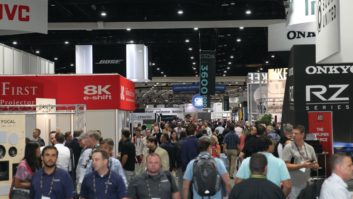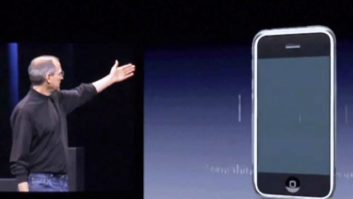No one ever said it was easy making a buck in the consumer electronics industry.
There were three reminders in the past couple of weeks that for all the allure, passion and excitement that exist in the consumer electronics industry, competition is cutthroat.
For instance, Costco is limiting returns on all CE products purchased at the warehouse club to 90 days. Why? The company was losing tens of millions of dollars in returns, mainly from big screen TVs, which consumers couldn’t operate or exchanged for better and cheaper models as prices fell. Costco found that while it’s easy to enter certain CE categories, it’s far harder to manage them profitably.
During last week’s Flat Panel Display Conference in San Diego, Ross Young, president of the meeting’s host, DisplaySearch, aptly described the many problems plaguing the market and possible remedies. He pointed out, “There are too many players in the supply chain and too much supply, too many brands and too many retailers.” The result has been pricing that should have occurred in 2010 is happening now, as attendee and PRO Group executive director Dave Workman noted.
Of course Young is right. The problem is: how do you get from here to there, short of industry collusion and a plethora of antitrust suits?
Well, the industry could use restraint in flat-panel production, in selling to any and all retailers that knock at their door, and in subsidizing lower and lower prices. Restraint among the 70-odd brands that Young said have flat-panel market share in the U.S. market?
Restraint is a quaint word, just like the phrase price increases. Restraint and price hikes have never been applied in the history of the CE business and they won’t be applied now.
This will play out like things normally do in CE. Some brands will push their production advantages, others design, while retailers will either push their size or the ability to do installation and sell audio and accessories with each flat panel sale.
While the official switch from analog to digital TV broadcasts in February 2009 looms, with a probable mad dash of sales volume, it is almost guaranteed that profit margins will be far scarcer than expected. The number of suppliers and retailers selling flat panels will be scarcer too.
And speaking of profit, how are the industry’s new best buddies doing? You know, Sirius and XM, the “merger of equals” twins. Both reported that revenue was up during calendar year 2006. Subscribers were up and new subscriber costs were down for both companies. Consumer satisfaction remains high. But the full-year loss was $718.9 million for XM while for Sirius the net loss was $1.1 billion. While I’m not advocating the merger of these two companies, based on the most recent numbers you can see why there is a major sense of urgency to get this deal approved and stop the bleeding.
These examples show that while the allure and excitement of the industry remains high making a buck (or a yen, yuan or euro) in CE is still the toughest business challenge in the world.











